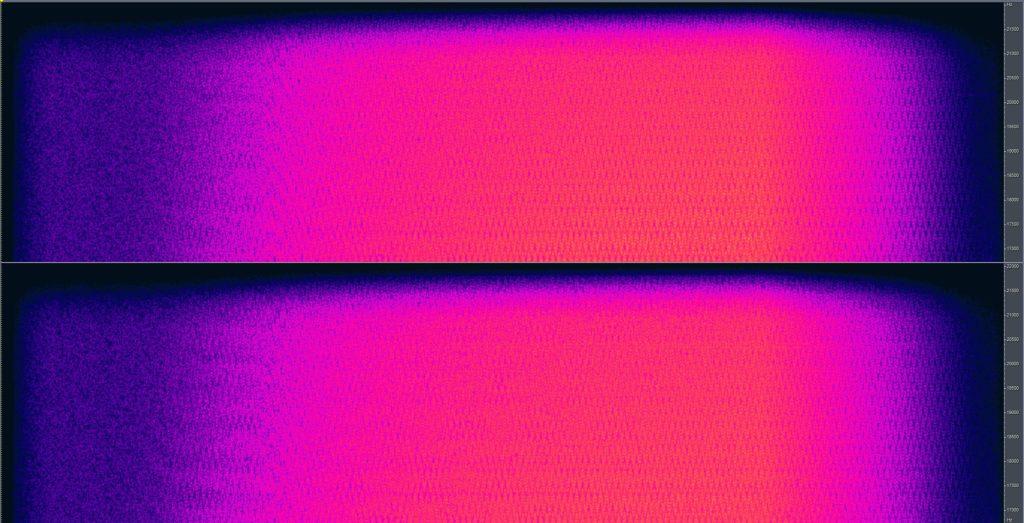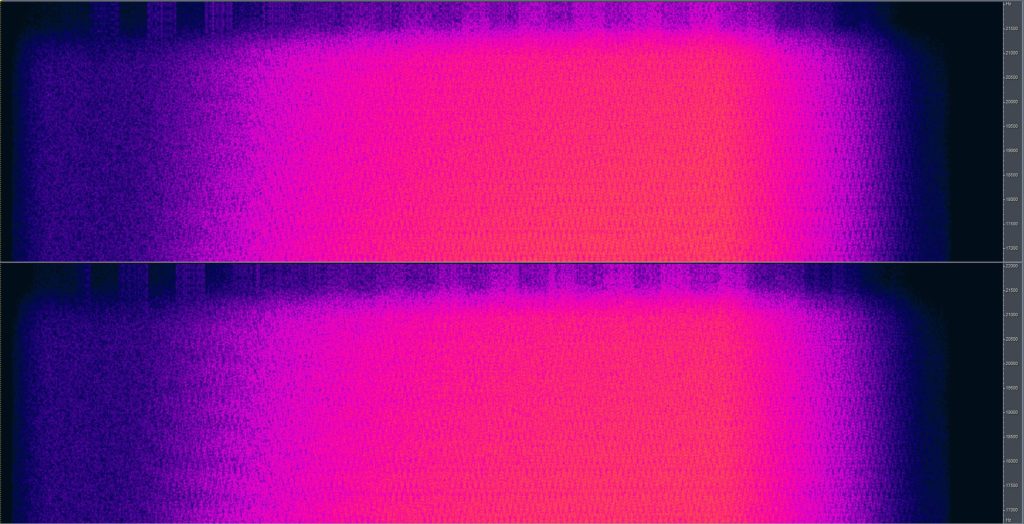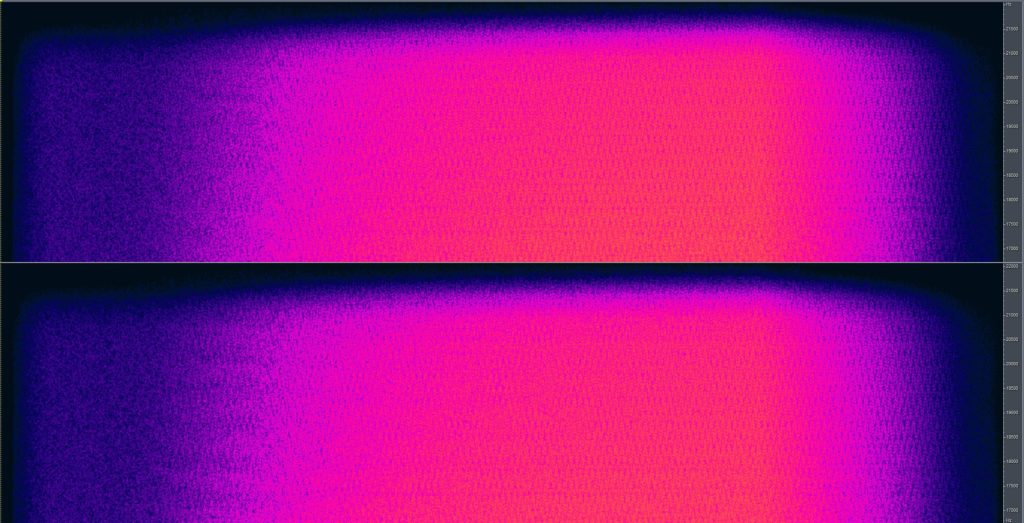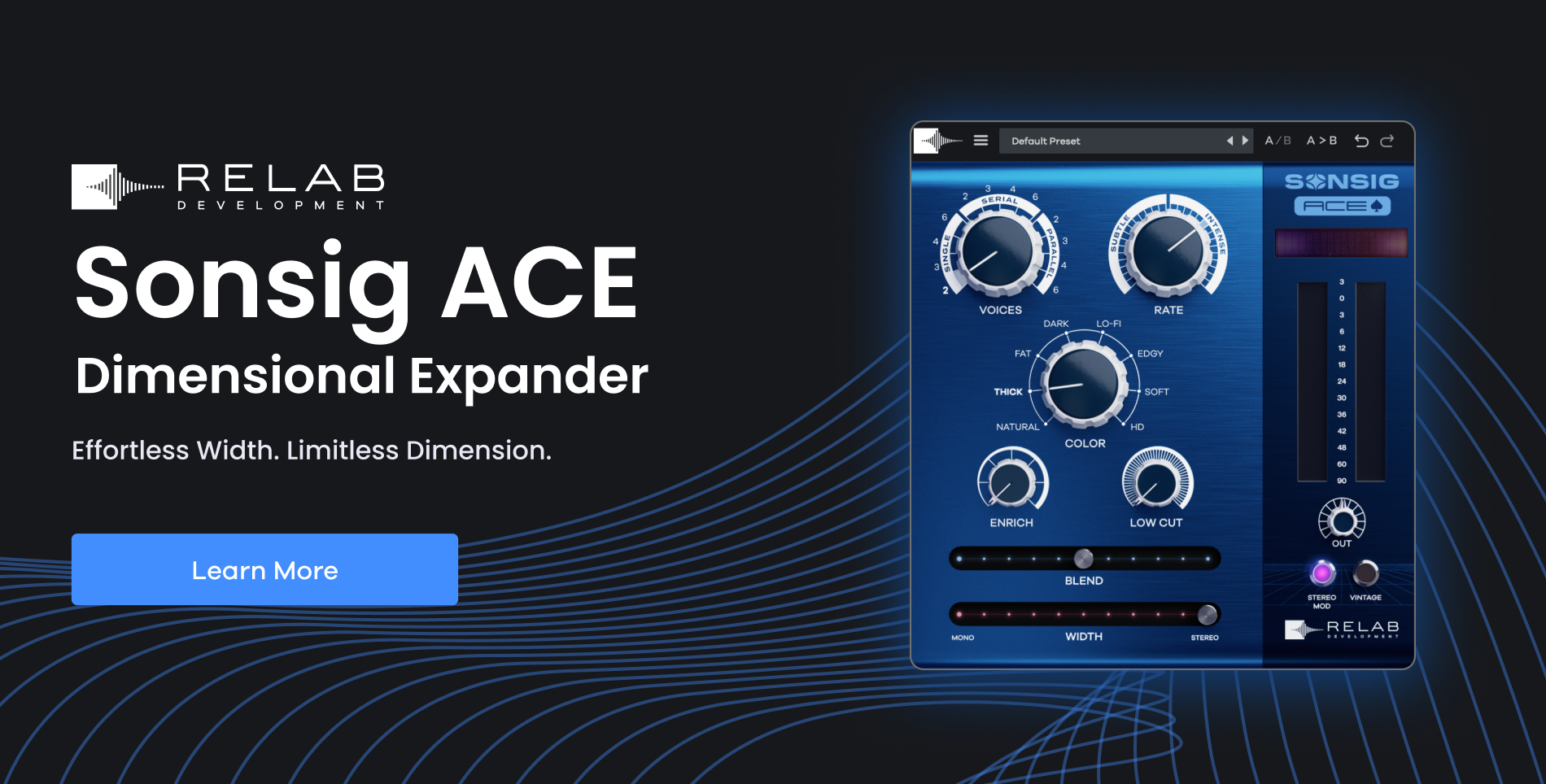Chorus effects are great for adding width and dimension, but they often introduce unwanted side effects. Tremolo-like wobbling, pulsing frequencies, and general instability can ruin the immersive effect you’re aiming for.
Worse, these artifacts become even more noticeable in mono, compromising your mix’s compatibility across various playback systems.
Can you really achieve natural-sounding width and depth if your chorus introduces phasing issues and artifacts?
Here’s What Your Chorus is Really Doing
You might not be aware, but a spectrogram provides a detailed view of audio, showing time, frequency, and amplitude simultaneously.
It’s kind of like having X-ray of your sound, revealing problems that might go unnoticed by ear alone, or at least directing your attention to what to listen for. We’ll include audio examples later as well.
First, we’ll start with an image of the dry sound of a synth pad—notice how it looks…
Spectrogram of a Dry Synth Pad

Spectrogram of a Typical Chorus Plug-in
Take a look at this second image. See those jagged peaks and dips in the high frequencies?
That’s visual proof of comb filtering and phasing—the culprits behind muddy, unstable chorus effects.
How can you ensure your mix translates well if your chorus falls apart or disappears in mono due to issues like this?

Now Look at Sonsig ACE‘s Artifact-Free Clean Output
Now, here’s Sonsig ACE‘s output.
See the smooth, even response, especially in those crucial high frequencies?
This directly translates to the sound: clear, artifact-free width and depth that works on any playback system.

The Secret Behind Sonsig ACE‘s Pristine Sound
As you can see, Sonsig ACE surpasses these typical chorus limitations, delivering the pristine, wide soundscape you crave.
Here’s how:
-
Advanced Algorithms: Sonsig ACE‘s core algorithms are meticulously designed and hand-tuned to prevent the phasing and interaction issues that cause artifacts in traditional chorus effects. This means you get smooth, artifact-free modulation across the entire frequency spectrum—especially noticeable in the high and low ends of the spectrum (typically huge problem areas for modulation effects).
-
Stable and Consistent: Sonsig ACE maintains rock-solid volume and frequency response. This is crucial for lush pads, strings, and other sounds where textural detail matters.
-
Mono-Compatibility: Unlike many effects that fall apart in mono, Sonsig ACE ensures your mix translates perfectly. Your wide and deep soundscapes will maintain their integrity on everything from club systems to earbuds.
Although the specifics of Sonsig ACE‘s technology are proprietary, the key lies in the 7 years of meticulous engineering and relentless focus on hand-tuning custom waveshaped modulators to avoid the side effects that plague other designs.
It’s this attention to detail that allows ACE to deliver on its promises.
Experience the Difference: Hear the Proof
While the tech behind ACE is complex, the results are simple: immersive mixes without compromise.
To truly understand the difference, you need to hear ACE in action.
Upgrade Your Sonic Toolkit Today With Sonsig ACE
If you produce ambient, cinematic, trance, progressive house, or any genre where rich textural soundscapes are key, Sonsig ACE is your new secret weapon.





